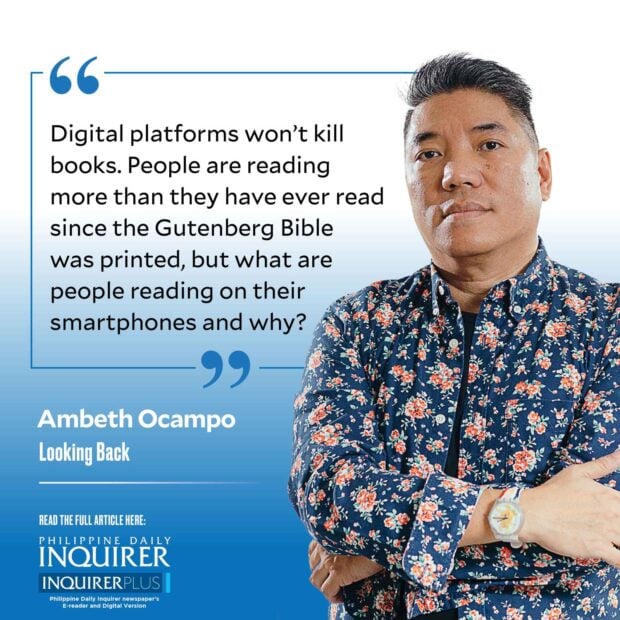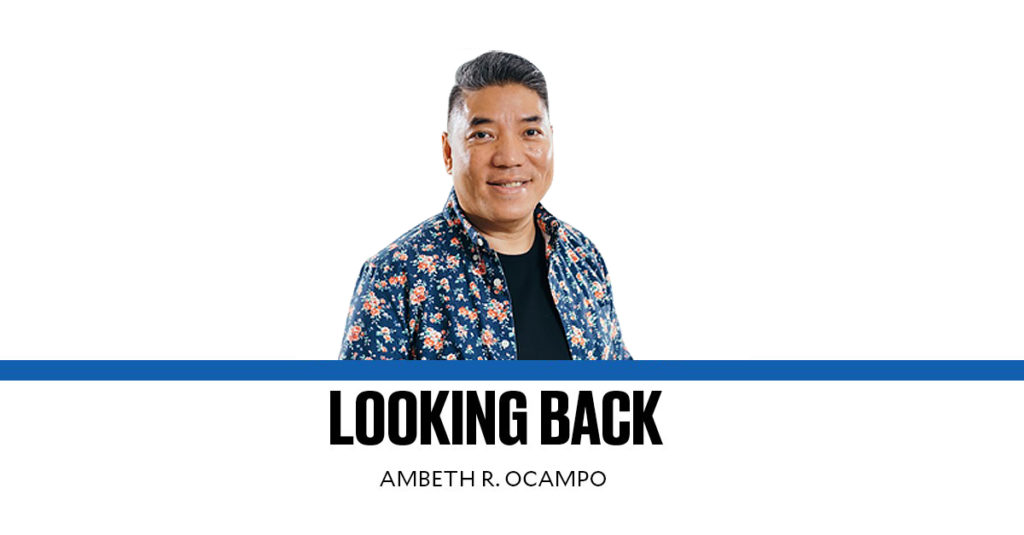
Walking around the Philippine Book Festival this weekend made me reflect on the books that shaped me and my time. I looked back on all the books I have published since 1986 and revisited my now-shattered dream of running a bookstore.
Many years ago, I offered to buy La Solidaridad bookstore from F. Sionil Jose and his wife Tessie on the condition that they lease the building they own to me. I knew then that my bookstore would not succeed in a mall. Then the pandemic came and I realized that a bookseller needed an updated skill set.
First is social media: Facebook, Twitter, Instagram, TikTok, and YouTube replaced newspapers, magazines, and reviews in academic journals as the way to promote books.
Second, the pandemic made buying books more convenient through Shopee, Lazada, and even overpriced Amazon than braving traffic to get to a brick-and-mortar bookstore. Third, while I remain one of the old-fashioned romantics who cherish the tactile, olfactory, and visual pleasures of handling a physical book, we must face the fact that a book is analog. A dinosaur in a digital ecosystem.
I reflected on the future direction of books and book publishing while walking around the book festival organized by the National Book Development Board. This event was different from other book fairs we know because it was all about Philippine books and books about the Philippines. No New York Times Bestsellers here. No pens, paper, or stationery, too. Selling books was not the point, it was about promotion, networking, and benchmarking. I was excited to see new authors, new genres, small and independent publishers, and even two bookstores outside the National Capital Region: Mt. Cloud from Baguio and Savage Mind from Naga sharing a booth. When will we see the same in Metro Cebu or Iloilo, in Davao or Zamboanga? The book festival proved that the book is far from dead.
Last Saturday, I inscribed almost 500 of my books, signing at two venues in the fair from 1 p.m. to 6 p.m. On Sunday, only 100 tickets for book signing were issued, yet I worked from 1 p.m. to 5 p.m. because it is not enough to sign a book anymore. One has to smile for selfies and chat briefly. On Day 2, after each hour, I stood up and went down the line of readers to apologize for needing a 10-minute health break.
On the first day of the fair, I posed behind two titles in the children’s section: “Ako ay may Titi” and “Ako ay may Kiki” by Genaro R. Gojo Cruz, illustrated by Beth Parrocha. My FB post received over 53,100 likes, over 22,700 shares, and over 1,100 comments. A debate brewed between progressives who welcome frank, basic, gender and sex education for children, and those who cannot even bring themselves to say “titi” and “kiki” much less read these from a children’s book. Conservatives prefer English euphemisms like “bird” or “piddle-dee-dee” for penis and “flower” for vagina. So powerful are anatomical terms in the vernacular that Spanish-era dictionaries of old Tagalog left them in Latin.
In the 1860 edition of the “Vocabulario de la lengua tagala,” compiled by the Jesuits Juan de Noceda and Pedro de Sanlucar, you will find three words. Puqui: “Pars vaerenda mullieris, verbum turpissimum” (A woman’s private parts, a vulgar word); Puquiqui: “Pars vaerenda puella” (A girl’s private part, this age distinction missed out by the 2013 Komisyon sa Wikang Filipino modernized edition of the “Vocabulario” that renders the word as “pribadong bahagi ng babae”). Puquingquing: “Lo mismo. Aplicado a los ciarturas Palayau” (same as above, applied to creatures, pet name). Did the fathers translate into Latin instead of Spanish, to make both words and concepts inaccessible to the uneducated? To make them sound scientific?
Philippine books are changing in terms of what they say and how they say it. Books today have improved design, typeface, and illustration. Formats are moving from text-heavy to visual. Books are not just for education, they can be read for pleasure too. Digital platforms won’t kill books. People are reading more than they have ever read since the Gutenberg Bible was printed, but what are people reading on their smartphones and why? We live in a time when the internet has made information (reliable and not) available to everyone. Information has exploded beyond our human capacity to digest it. Books will determine the future.


